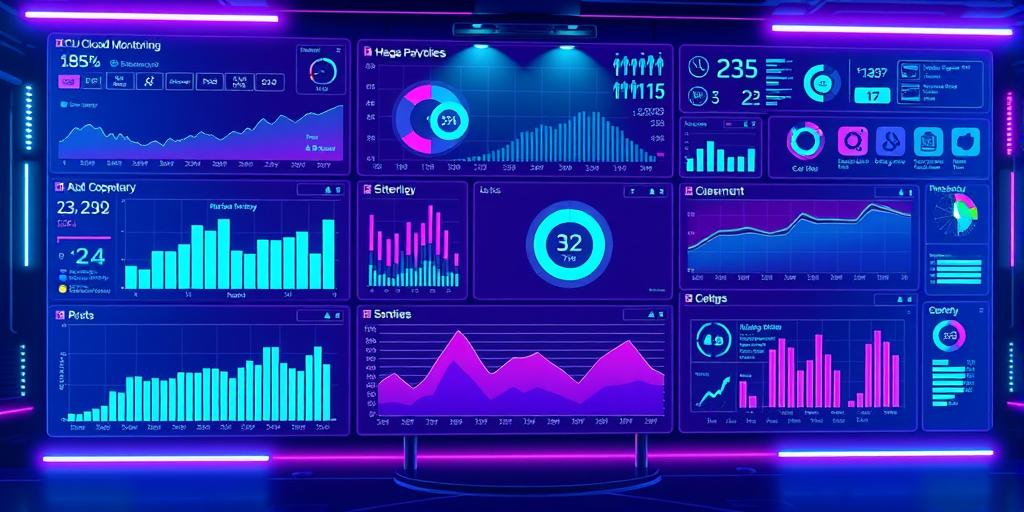Want to keep a hawk-eye view of your cloud infrastructure without the constant stress and frantic firefighting? Dive into the world of cloud monitoring tools – your secret weapon for preventing disasters before they strike. We’ll explore the top tools that provide real-time insights, actionable alerts, and the ability to proactively address potential problems, leaving you feeling confident and in control.
Understanding Your Cloud Monitoring Needs
Before diving into the best tools, let’s clarify what constitutes effective cloud monitoring. It’s more than just checking if things are ‘up’ or ‘down’; it’s about gaining a comprehensive understanding of your entire cloud ecosystem. This includes your servers, databases, networks, applications, and the overall performance of your infrastructure. A good cloud monitoring tool provides complete visibility into these crucial elements, enabling you to identify and resolve issues swiftly. This proactive approach can save you precious time and resources, and prevent costly downtime. Consider the following aspects when evaluating a cloud monitoring solution:
Key Metrics to Monitor
What metrics are truly essential to track? CPU utilization, memory consumption, disk I/O, network latency, and application response times are all critical factors. Efficient monitoring helps you identify bottlenecks, resource constraints, and potential performance issues before they escalate into major problems. For example, a spike in CPU usage could point towards a poorly optimized application or a denial-of-service attack. Early detection allows for timely intervention and prevents major outages. Ensure your chosen monitoring tool can track these key metrics effectively.
Alerting and Notifications
Real-time alerts are your first line of defense against cloud infrastructure issues. Immediate notification of critical events prevents problems from snowballing. You should be able to customize alerts to suit your specific needs, setting thresholds for various metrics and choosing notification methods, such as email, SMS, or integrated chat applications. The ability to quickly react to alerts is key to resolving issues efficiently. A sophisticated alerting system will help you to stay ahead of any potential issues, allowing you to address them before they impact your users or business.
Scalability and Integration
Your monitoring solution must adapt to the evolving nature of your cloud infrastructure. Choose a tool that scales seamlessly with your business growth and integrates effortlessly with your existing cloud services (AWS, Azure, GCP, etc.). Seamless integration ensures you have a holistic view of your systems without resorting to multiple disconnected dashboards. A unified view streamlines monitoring and troubleshooting, boosting your efficiency and simplifying the process.
Top Cloud Monitoring Tools: A Detailed Review
Let’s delve into some of the leading cloud monitoring tools available today, categorized for clarity:
Comprehensive Cloud Monitoring Platforms
Some platforms offer a full suite of monitoring capabilities, including application performance monitoring (APM), infrastructure monitoring, and log management. These solutions are best suited for large enterprises needing a comprehensive view of their cloud operations. Examples include Datadog, Dynatrace, and New Relic. These giants are known for their advanced features and robust capabilities, offering deep insights into complex infrastructures.
Specialized Monitoring Tools
Specialized tools provide focused monitoring for specific aspects of your cloud environment. Consider Prometheus for metrics-based monitoring, Grafana for data visualization and dashboarding, and ELK Stack (Elasticsearch, Logstash, Kibana) for log management. These tools are frequently chosen by developers and DevOps teams who need granular control and customization capabilities. They offer deep dives into specific areas of the infrastructure, perfect for highly specialized needs.
Cloud Provider-Specific Tools
Every major cloud provider (AWS, Azure, GCP) offers its own monitoring solutions integrated directly into their ecosystem. These solutions offer comprehensive visibility into services running on the respective platforms and generally integrate seamlessly. This is often a great starting point for organizations heavily reliant on a single cloud provider. They provide a convenient and cohesive approach for managing cloud environments within their own ecosystem.
Selecting the Right Cloud Monitoring Tool
Choosing the perfect tool requires careful consideration of factors such as your budget, the complexity of your infrastructure, and your team’s technical expertise. It’s crucial to balance functionality with usability; a highly complex tool might be overwhelming for smaller teams. Start with a trial period, if available, to thoroughly evaluate a tool’s capabilities before fully committing. Always ensure the tool’s scalability aligns with your future growth plans. Don’t underestimate the importance of ease of use and integration with your existing systems.
Conclusion: Take Control of Your Cloud Today!
Effective cloud monitoring is not merely an IT task; it’s an essential business strategy. By investing in the right tools and developing proactive monitoring practices, you can avoid costly downtime, enhance operational efficiency, and unlock new opportunities for growth. Don’t let cloud infrastructure problems keep you up at night – choose the right tool today and reclaim your peace of mind!




